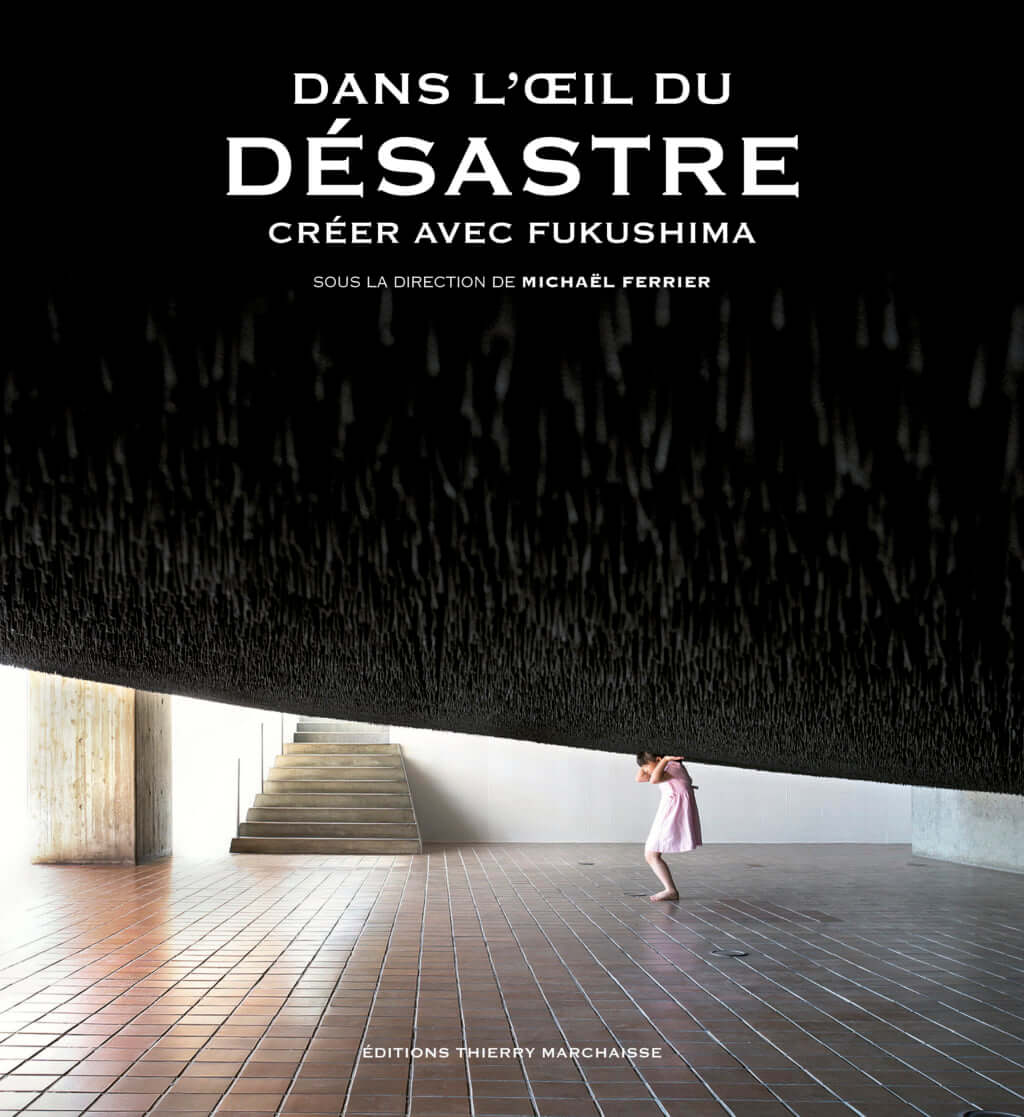Art After Fukushima
French and Japanese artists discuss the impact the 2011 catastrophe has had on their practice in the book 'The Eye of the Storm.'

© Editions Thierry Marchaisse
‘It wasn’t just the ground that was shaken when the earthquake hit; it marked a real shaking up of values. Fukushima therefore enabled people to look within themselves but also to look at the world. What have we done with this world? What is this?’ This declaration was made by Michaël Ferrier, who contributed to and edited the book Dans l’oeil du désastre, créer avec Fukushima (‘The Eye of the Storm: Art in the Time of Fukushima’), on the radio channel France Culture in March 2021.
In this book, the writer, professor at Chuo University in Tokyo and director of the research group ‘Figures de l’étranger’, reflects on the disaster that struck on 11 March 2011 and its cultural, political, and artistic implications. To do this, he brought together ten Japanese artists, photographers, filmmakers, painters, performers, and playwrights and their French counterparts, to explore the effect of the catastrophe on their artistic practice and the changes it brought about. These artists are often highly socially engaged, like the ChimPom collective and Minato Chihiro who, through these interviews, offer a perspective both on the nuclear disaster in itself and on the way it has been picked up on for political ends.
Showing the invisible
The question of the invisible nature of this tragedy also arises: in short, how can we show things that cannot be seen? How can we depict and represent radioactivity in an artistic manner when it is strictly invisible? Akira Kurosawa had already examined this issue, particularly in his film Dreams (1989), a series of short films in which the viewer witnesses the explosion of a nuclear power plant and the questioning of the colour of a radioactive cloud.
Lastly, Dans l’oeil du désastre, créer avec Fukushima also investigates the more practical consequences that this tragic event has had on the art world: the first of these is censorship, not categorical but encountered here and there, as the artists describe. The second is the change in methods of financing, with a growing number of engaged artists bypassing traditional channels and instead turning towards crowdfunding. This rich publication, enhanced by a diverse range of perspectives, continues the work Michaël Ferrier started on the Fukushima disaster in Fukushima, récit d’un désastre, released in 2012.
Dans l’oeil du désastre, créer avec Fukushima (‘The Eye of the Storm: Art in the Time of Fukushima’) (2021), a book by Michaël Ferrier, is published by Editions Marchaisse (not currently available in English).
TRENDING
-
A House from the Taisho Era Reveals Its Secrets
While visiting an abandoned building, Hamish Campbell discovered photographs the owner had taken of the place in the 1920s.

-
The Taboo-Breaking Erotica of Toshio Saeki
The master of the 1970s Japanese avant-garde reimagined his most iconic artworks for a limited box set with silkscreen artist Fumie Taniyama.

-
With Meisa Fujishiro, Tokyo's Nudes Stand Tall
In the series 'Sketches of Tokyo', the photographer revisits the genre by bringing it face to face with the capital's architecture.

-
Masahisa Fukase's Family Portraits
In his series ‘Family’, the photographer compiles surprising photos in which he questions death, the inescapable.

-
Hajime Sorayama's Futuristic Eroticism
The illustrator is the pioneer for a form of hyperrealism that combines sensuality and technology and depicts sexualised robots.





